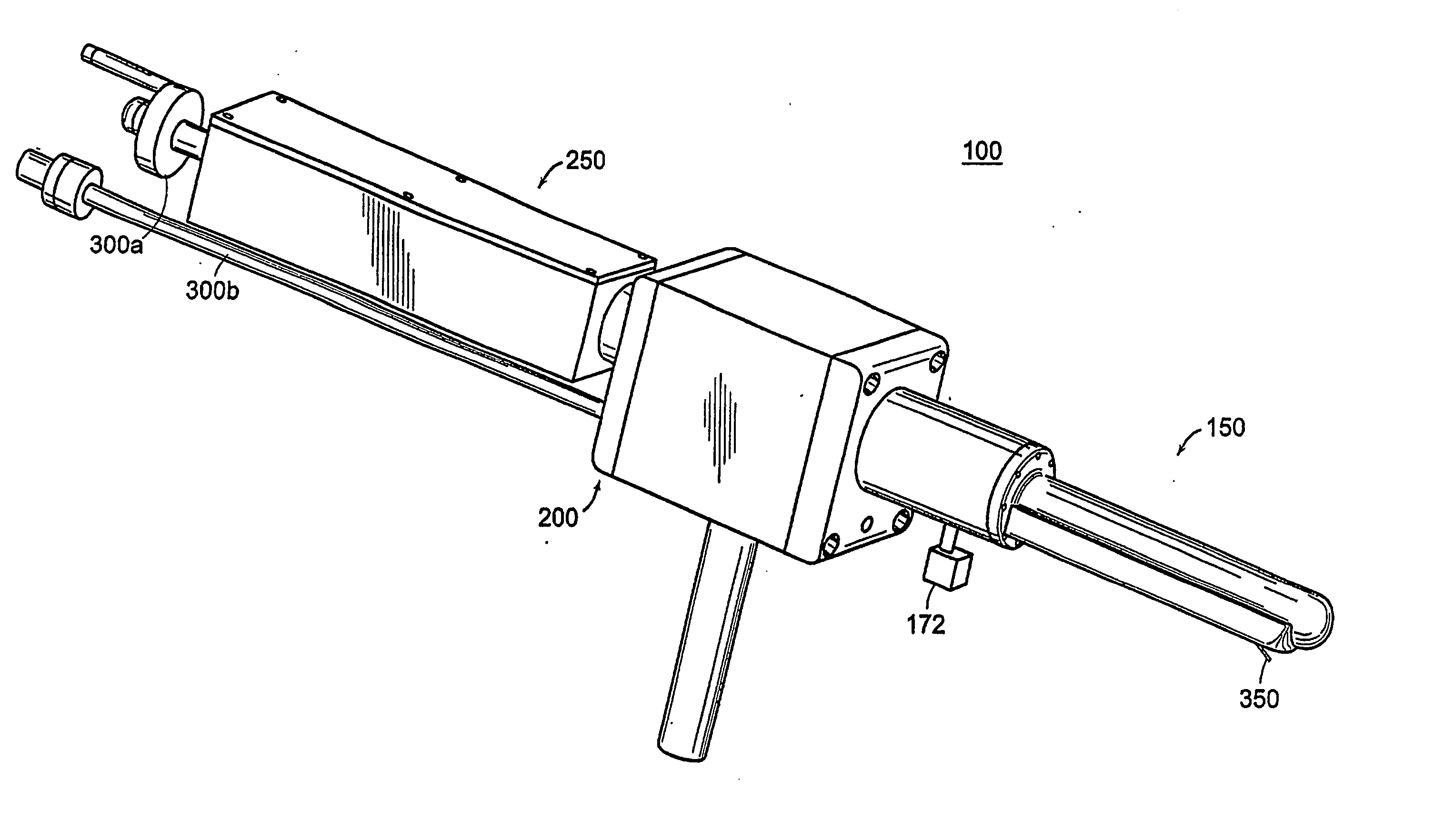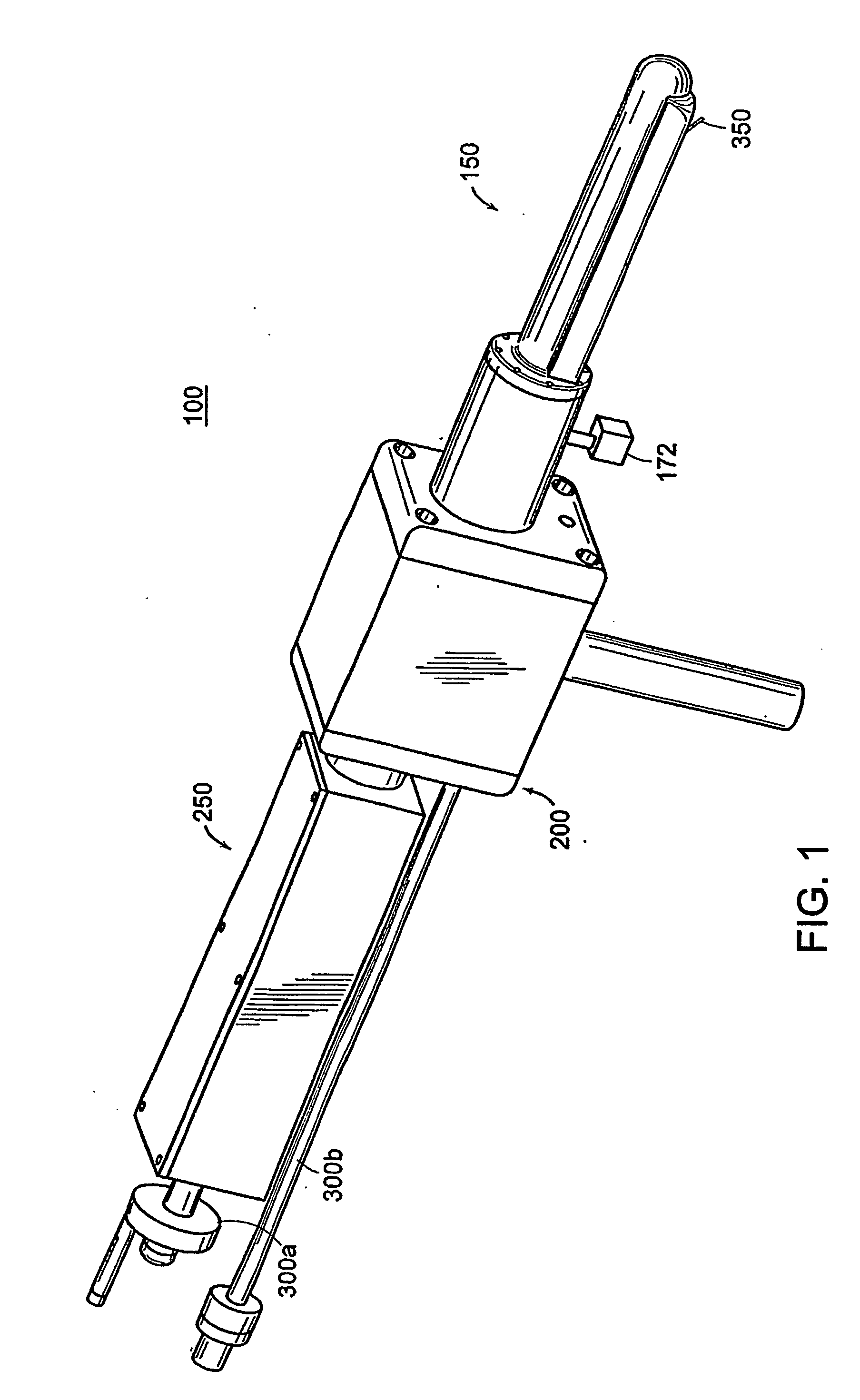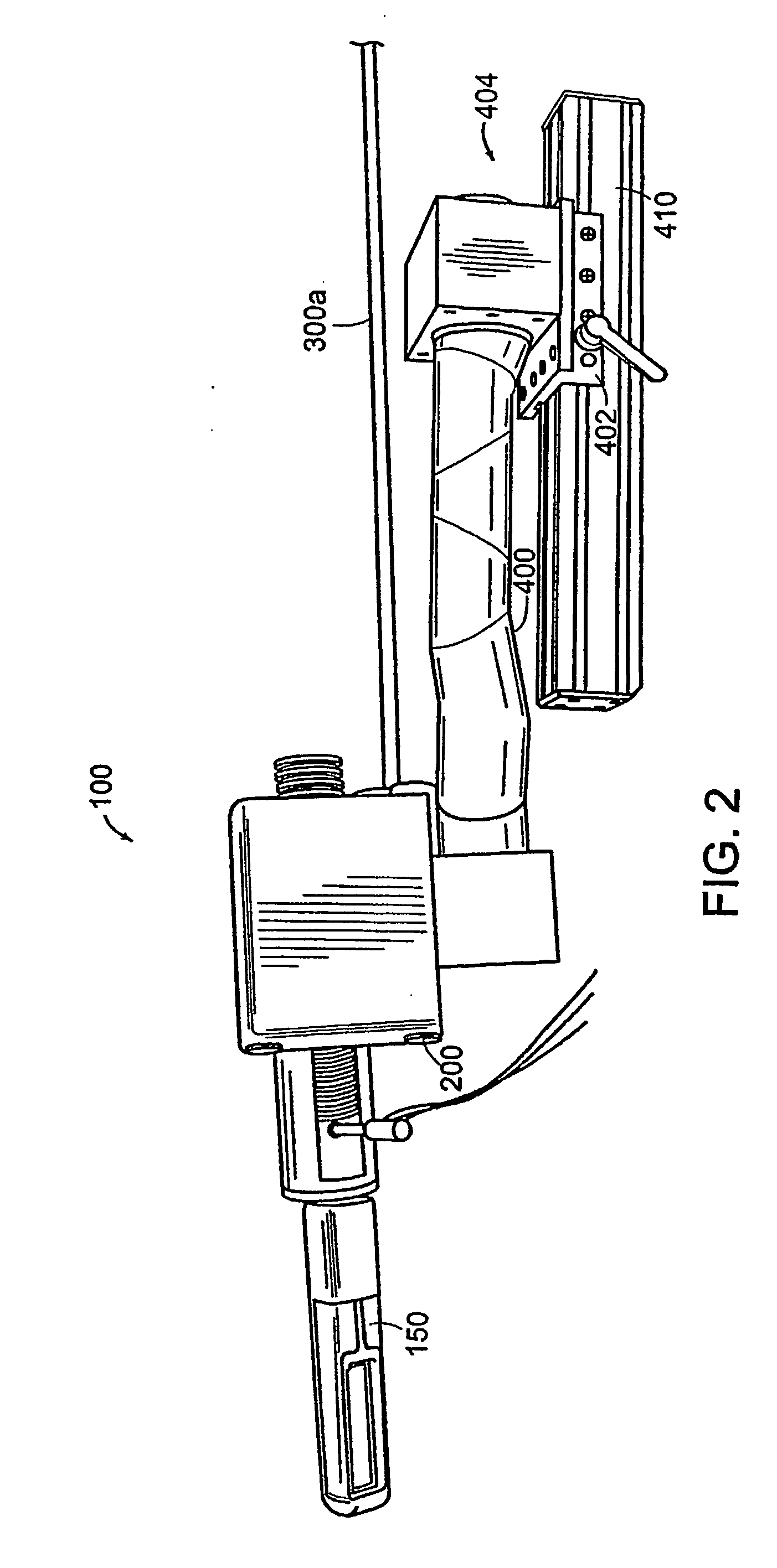Apparatus for insertion of a medical device during a medical imaging process
a medical device and imaging technology, applied in the direction of magnetic variable regulation, instruments, catheters, etc., can solve the problems of prostate cancer, trus-guided biopsy fails to correctly detect the presence of prostate cancer in approximately 20% of cases, and targeted local therapy is not possible today, so as to minimize dynamic tissue deformation, minimize the effect of dynamic tissue deformation, and maximize the accuracy of needle placemen
- Summary
- Abstract
- Description
- Claims
- Application Information
AI Technical Summary
Benefits of technology
Problems solved by technology
Method used
Image
Examples
example
[0142] A mechanically actuated, transrectal needle guide is used to perform MR guided needle placements in the prostate. With a microcoil tracking method, the position and orientation of the biopsy needle guide in the MR imaging volume (60 msec) could be quickly and accurately located. Knowing the position of the biopsy needle allows for acquisition of realtime images of a plane including the needle and registration of the needle position with previously acquired, high-resolution images of the prostate. In four canine studies, the functionality and applications of a system was demonstrated.
[0143] A thin-walled, cylindrical plastic sheath (Delrin plastic, DuPont Inc., Wilmington, Del.) with a radius of 1.5 cm is inserted into the subject's rectum, forming a stable and stationary entry point through which the prostate can be accessed. Integral to the sheath is a single turn imaging loop (with a diameter of 2.5 cm) for local imaging of the prostate. The sheath has a window, located wi...
PUM
 Login to View More
Login to View More Abstract
Description
Claims
Application Information
 Login to View More
Login to View More - R&D
- Intellectual Property
- Life Sciences
- Materials
- Tech Scout
- Unparalleled Data Quality
- Higher Quality Content
- 60% Fewer Hallucinations
Browse by: Latest US Patents, China's latest patents, Technical Efficacy Thesaurus, Application Domain, Technology Topic, Popular Technical Reports.
© 2025 PatSnap. All rights reserved.Legal|Privacy policy|Modern Slavery Act Transparency Statement|Sitemap|About US| Contact US: help@patsnap.com



